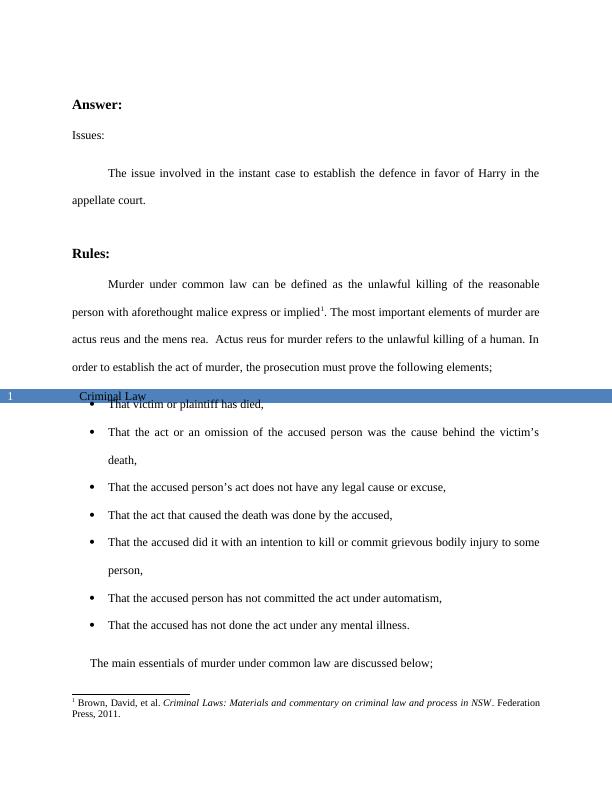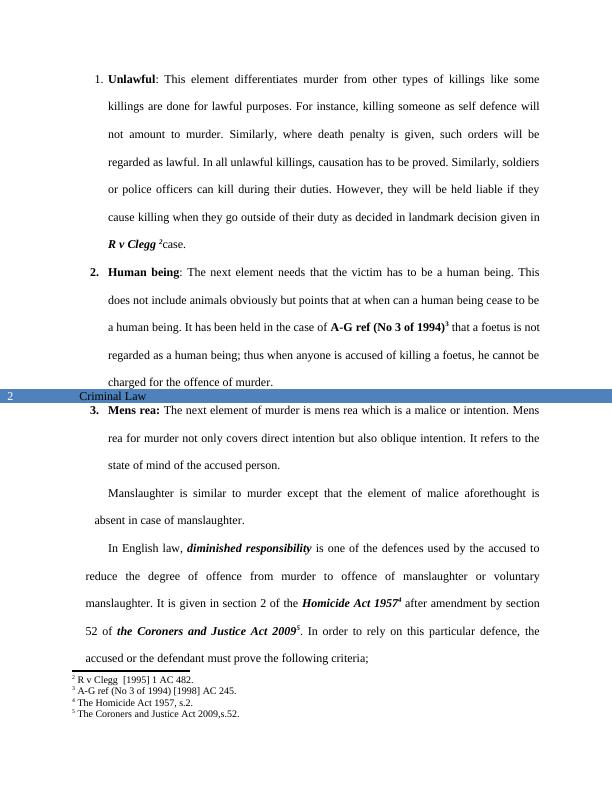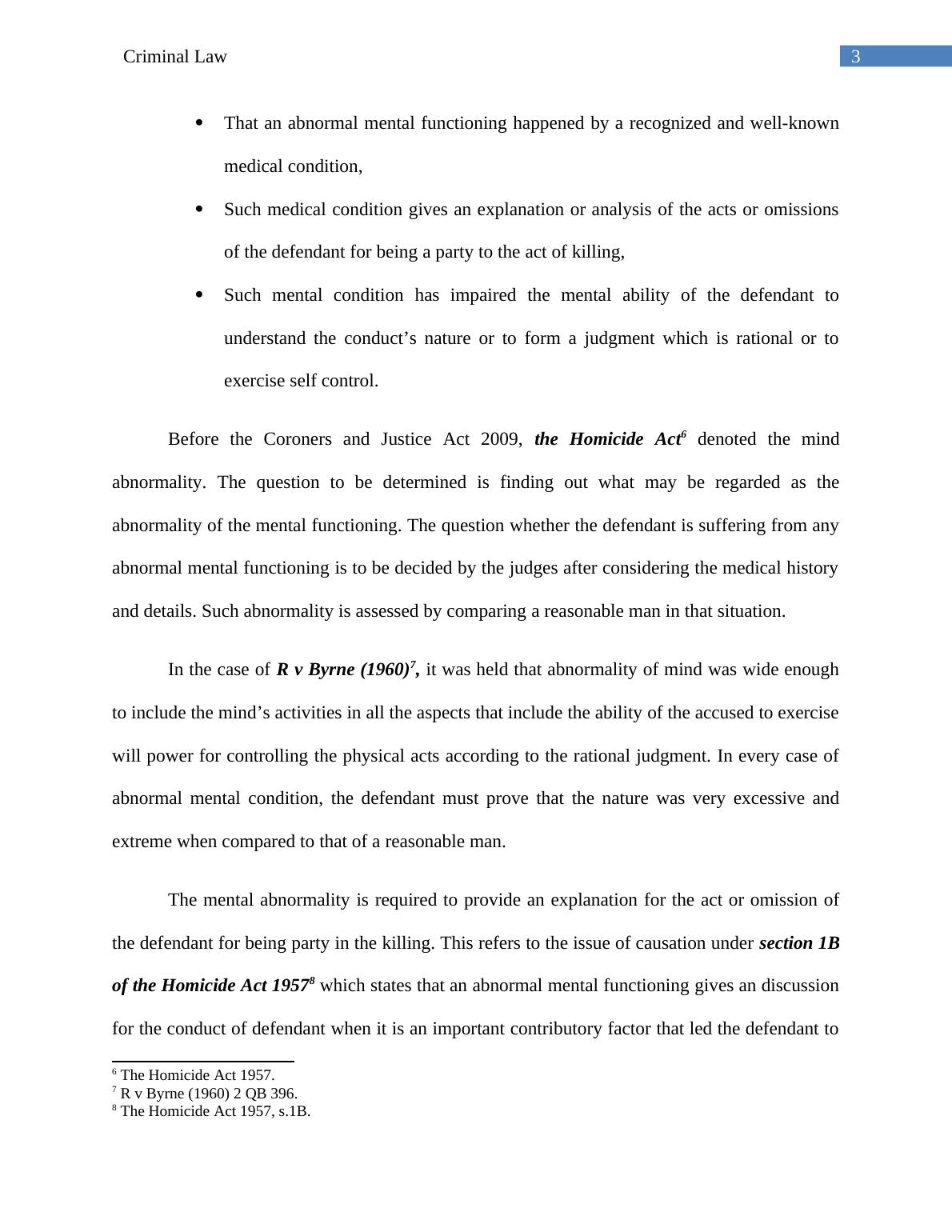Criminal Law: Murder and Defences
Prepare a 2500 word skeleton argument to lodge with the Court of Appeal for the appeal of Harry, the defendant.
12 Pages3002 Words428 Views
Added on 2022-11-30
About This Document
This document provides an analysis of the elements of murder under common law and discusses the defences of diminished responsibility and loss of control. A case study involving a 10-year-old boy charged with murder is used to illustrate the application of these concepts. The boy's diagnosis of ADHD and his actions leading to the death of his mother are examined in relation to the defences available.
Criminal Law: Murder and Defences
Prepare a 2500 word skeleton argument to lodge with the Court of Appeal for the appeal of Harry, the defendant.
Added on 2022-11-30
ShareRelated Documents
End of preview
Want to access all the pages? Upload your documents or become a member.
Criminal Law: Elements of Murder and Available Defenses
|6
|1406
|67
Report on Principles Criminal Liability
|10
|2767
|56
CRIMINAL LAW. CRIMINAL LAW Name of the Student: Name of
|12
|3333
|39
Criminal Law: Mens Rea and Actus Reus in Criminal Activity
|12
|4316
|36
The common law of the United Kingdom
|11
|3036
|17
Section 300 of Criminal Code Act, 1899 | Criminal Law
|16
|2874
|25




